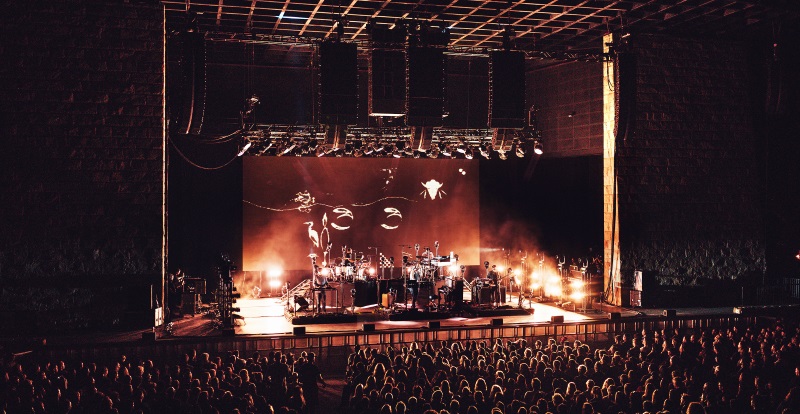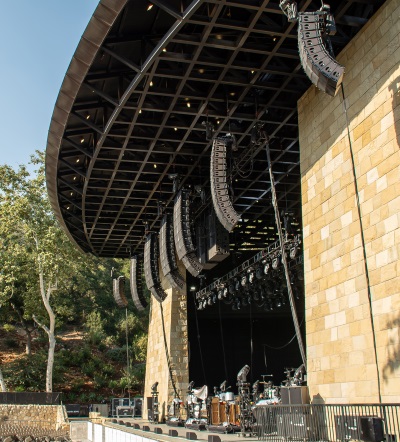
Making Arrangements
With the band and artist management eventually onboard, a collective decision was made to stage the gig at the Santa Barbara Bowl, which had previously been the site of a L-ISA show by the chillwave duo ODESZA earlier in the year.
This time out, Clearwing Productions (Milwaukee, Phoenix) flew a 7.1 configuration comprised of three center hangs of eight L-Acoustics K2 line array modules plus four Kara cabinets down, paired with two adjacent hangs of 14 Kara for the five-array Scene system. That arrangement was flanked by two outer hangs of nine Kara enclosures each for the Extension system, while a dozen KS28 subs were flown in two cardioid arrays directly behind the center K2 hangs for focused low-frequency delivery.
Nine compact X8 coaxial loudspeakers were spread across the stage lip to deliver frontfill, while two ARCS II line source loudspeakers on either side of the stage supplied coverage for audience on the extreme sides of the stage. LA8 and LA12X amplified controllers powered all of the enclosures, and a pair of L-ISA processors at FOH generated the show’s spatialization.

Bon Iver’s musician lineup is eclectic, ranging from as few as three artists to more than 20, depending on the show. This show featured a full-time drummer and four multi-instrumentalists on vocals, guitar, keys, bass, sax, percussion, and a second drum kit.
“Even with only five guys, we still had 85 discrete inputs coming from the stage, and the biggest eater of inputs is that we had two drum kits and piles of electronics, most of which are stereo,” notes Whitesel, who manned a Waves-equipped DiGiCo SD7 console at FOH that paired with an SD5 onstage used by Donato Paternostro to provide 13 monitor mixes plus various effects buses.
“L-ISA is currently capable of 96 inputs, so I gave it each of my 85 inputs as channel direct outsand ended up busing effects returns.”
The concert also utilized two DiGiCo SD-Racks shared between monitors and FOH, with interfacing to the L-ISA Processor achieved via MADI.
“Since I normally use the SD7’s local MADI I/O to get to the multi-track record rig, this show required a pair of DD4 (Optocore to MADI I/O) to move the record rig’s I/O off the desk and onto Optocore. Re-configuring I/O in my show file was simple,” he adds.
